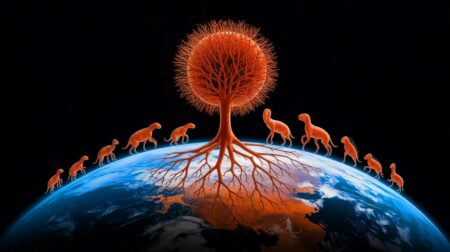Palm trees are hardy perennials. There they are on scenic sandy beaches across much of the world, providing picturesque contrasts to them. Yet this seeming ubiquity of palms hides an alarming truth: nearly 1,000 palm species are at risk of going extinct around the planet.
A team of scientists has reached this conclusion by studying the conservation status of nearly 1,900 palm species using artificial intelligence. They found that more than half of them are threatened or endangered.
“We need to do all we can to protect biodiversity and that encompasses more than a thousand palm species that we now know may be threatened,” stresses Sidonie Bellot, a scientist at the Royal Botanic Gardens, Kew, in London who led the study.
Plants belonging to the palm family are found across 227 regions and the level of threat facing most of these plants has not been clearly understood even though palms are well represented on the Red List of the nternational Union for Conservation of Nature, the scientists say.
To gain a better understanding of the scale, the researchers used artificial intelligence and available Red List data to examine how extinction risks relate to palm distribution and ecology.
They also combined new data with existing Red List assessments to determine the extinction risk of 1,889 species, or 75% of the palm family. More than half of these species, or 56%, may be threatened with extinction, which when extrapolated to the whole family means more than 1,000 species in all.
“This is a bit less than extrapolations based on the Red List assessment only, but is still very concerning given the many interactions between palms and other living beings,” Bellot says. “These interactions range from the fungi and insects living on them, to the mammals and birds eating their fruits, to the many people relying on palm products.”
By using these new insights ecologists can earmark threatened species for stepped-up conservation efforts, primarily in Madagascar, New Guinea, the Philippines, Hawaii, Borneo, Jamaica, Vietnam, Vanuatu, New Caledonia, and Sulawesi, all of which are priority regions for palm conservation.
“These regions each host between 12 and 291 palm species where more than 40% of the evolutionarily distinct, functionally distinct, and/or utilized species may be threatened. Similarly, another 15 regions were identified where less than 10 palm species exist, but the threat of extinction is equally high,” the scientists explain.
“Palms are the most iconic plant group in the tropics and one of the most useful too. After this study, we have a much better idea of how many, and which, palm species are under threat,” notes Rodrigo Cámara-Leret, a senior researcher at the University of Zurich.
“It is our hope that the prioritized list we provide of useful palms facing extinction and of their non-threatened alternatives may foster collaborations across all stakeholders and accelerate actions to conserve them,” the scientist adds.
Did you like it? 4.6/5 (27)








